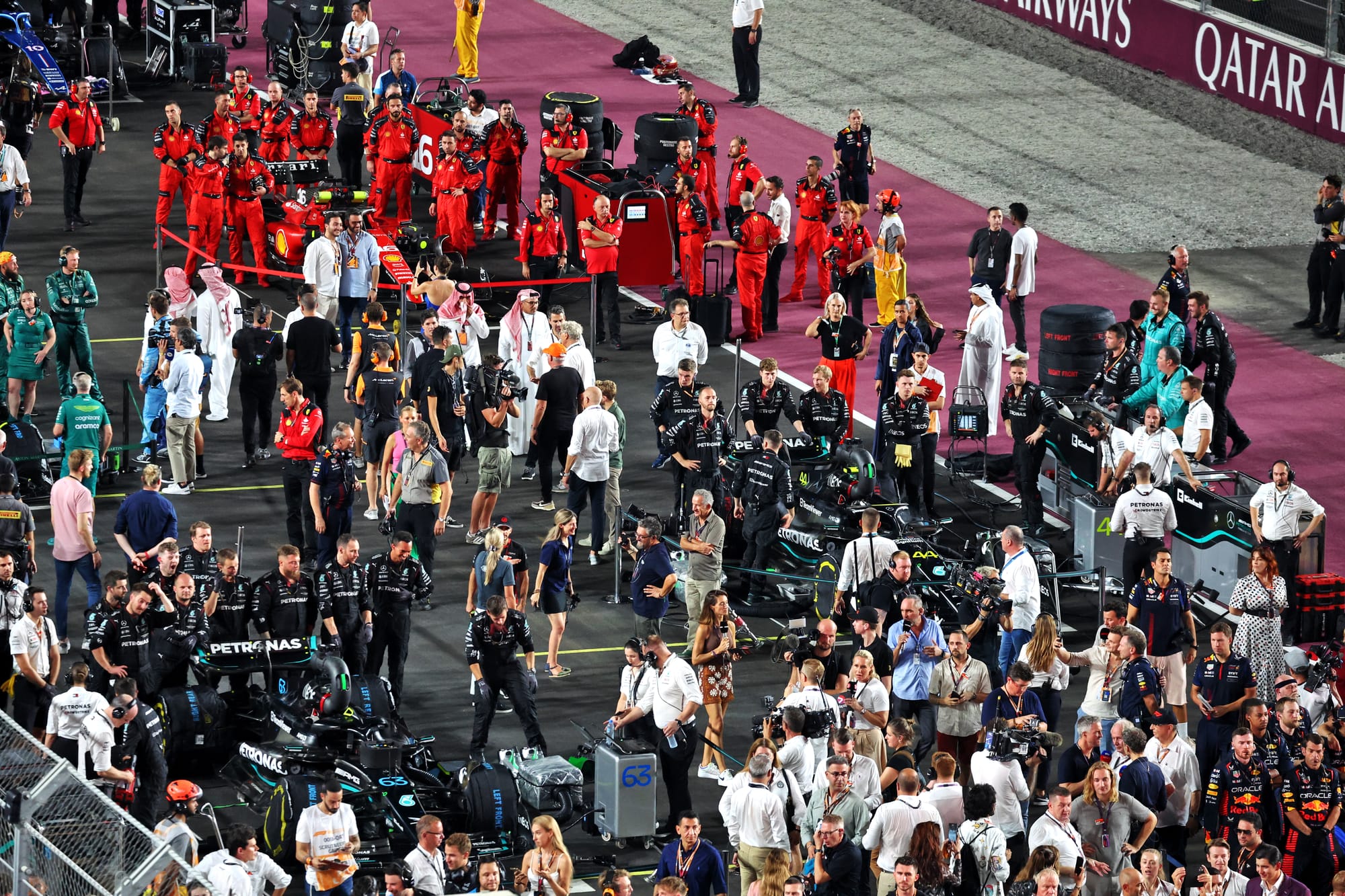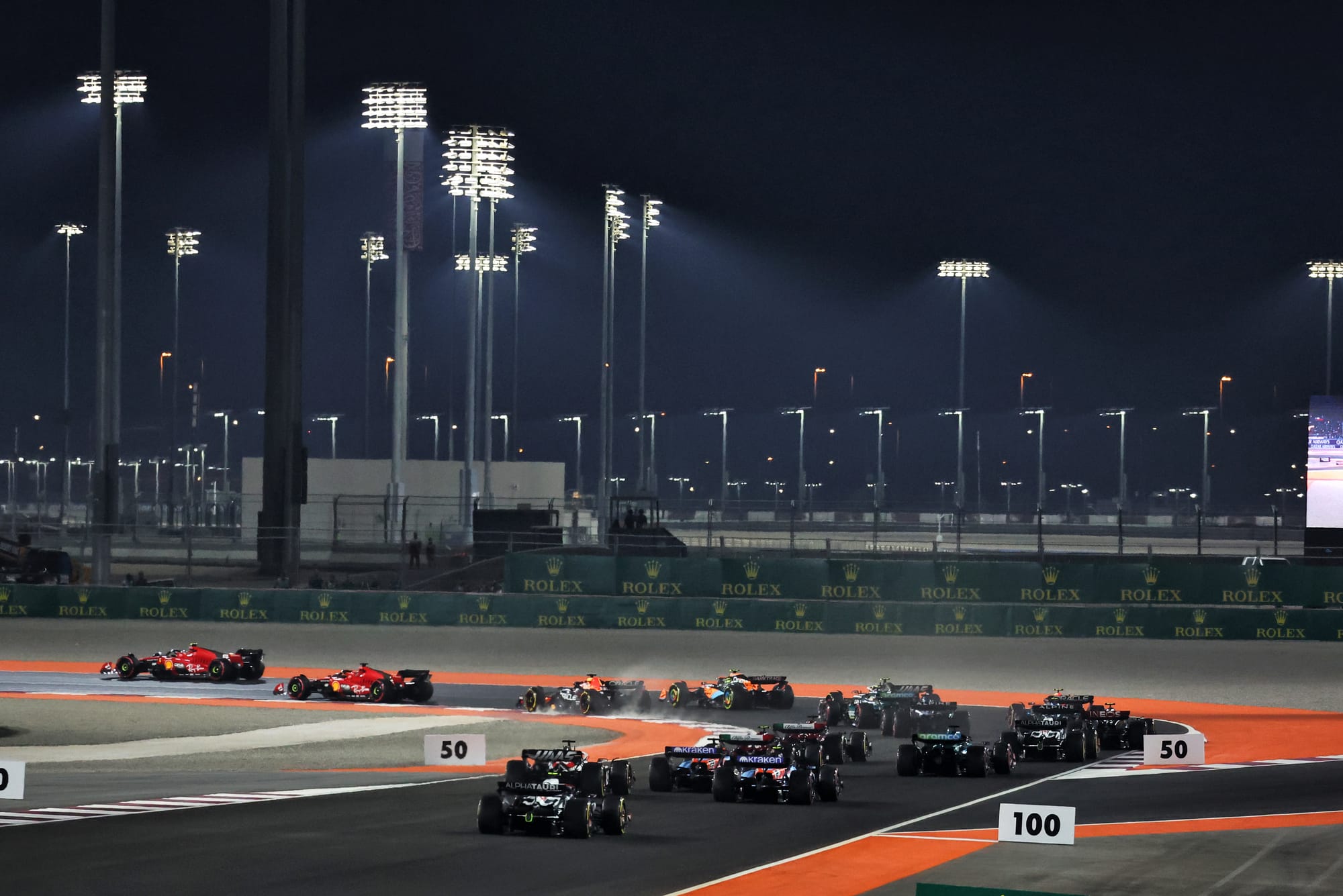
A concept that Formula One teams originally rejected due to paranoia is now being implemented as part of a plan to assist protect drivers in harsh situations.
F1 was fortunate to avoid a driver suffering serious consequences, either through illness or an accident, at this year’s Qatar Grand Prix, as the race took place with the air temperature still above 30 degrees and high humidity, leaving drivers estimating cockpit temperatures of up to 80 degrees Celsius.
Esteban Ocon puked in his helmet, Alex Albon was evaluated for acute heat exposure, Logan Sargeant retired from the race due to severe dehydration, and Lance Stroll said he was “passing out” through numerous of the track’s high-speed turns.
Following that weekend, the FIA promptly declared that it would seriously consider what could be done to assist drivers in such situations, with two key action areas agreed upon.
SOMETHING TEAMS PREVIOUSLY REJECTED

The first alteration is what the rulemakers describe as a driver cooling scoop, which will send air into the cockpit, but it will not function like IndyCar’s little device at the top of that car’s Aeroscreen.
It was defined as a “slot that can fit under the chassis” by FIA F1 director Nikolas Tombazis, which is why teams had previously rejected it.
“The reason if had been rejected in the past was because people were worried it would be sucking off boundary layer stuff,” said Tombazis when asked by The Race to explain how it would be integrated into the car.
“And all of this would be used for some sort of indirect aero advantage and people were making up various, slightly paranoid hypotheses about what can be used.
“It’s just really allowing that scoop to exist in a certain area and giving some maximum dimensions for it.”
Because airflow into the underfloor is such an important aspect of ground-effect F1 cars, it’s simple to envisage a slotted component under the chassis interfering with the aerodynamics and producing problems or chances for exploitation.
It would be surprising if some teams did not attempt to utilize the provision for a slotted component of the chassis for some form of sporting advantage.
According to the FIA, this is a minor consideration. The design’s planned integration into the regulations will simply enable the cooling scoop to exist in a specific area with maximum, set dimensions.
“Everyone’s learned their lesson and thinks a bit less selfishly,” Tombazis went on to say.
The scoop should increase ventilation, however it won’t be cool, fresh air redirected at the driver.
When compared to a closed cockpit car, such as those used in the Le Mans 24 Hours and the World Endurance Championship, the alternatives are ultimately limited.
In those cars, actual air conditioning is permitted, though some teams only use ducting from the outside – into the helmet or the seating area around the driver.
MORE ROOM FOR EXPLOITATION?

The second element of the plan to assist drivers in extreme heat will kick in when a specified temperature and humidity threshold is met, and will only be applicable to certain tracks with significant G-force loading.
When this level is reached, the FIA declares the race to be in extreme conditions, such as when a wet race is declared. This will result in an increase in weight allowance of about two kg.
This has not yet been incorporated into the regulations, although it is the objective. The idea is that teams will be required to use this extra allocation to keep the driver cool.
The FIA is considering cooling vests, which are now hit-or-miss in IndyCar but are improving all the time, though this has yet to be properly studied.
However, it will be crucial to examine how this is policed, as it may not be strictly regulated at first.
“If we tell teams ‘you have two kilos, you must use it for this purpose’ it will be in their own interest to do so because that will keep the drivers cool, focused and not lose any performance,” Tombazis insisted.
“Hopefully that will be the solution.”
Tombazis stated that the FIA has considered whether establishing exactly what must be installed is the best approach, but that “if we start trying to standardize a system to a tender and all of that, it would be quite a slow process.”
However, allowing the teams some leeway with the extra two kg may place too much burden on the competitor.
Tombazis went on to say “we want to make it clear that it’s not something that you can use for any form of dodgy advantage” .
The only way to do that without just trusting the teams, which could be naïve, is to get more prescriptive.
“We need to work out some of the details,” Tombazis admitted.
“It’s really for the purpose of that [driver cooling] and it’s mandatory.
“You could put the ballast in the seat but you’d be a bit of an idiot. Because your driver would… in Qatar I think we saw, apart from the situation after the race, drivers towards the latter part of the race make more mistakes.
“That was clearly not in the teams’ interest.”
Leave a Reply